The AWS IoT Integration for The Things Stack synchronizes the device registry: you can create and claim things in AWS IoT Core which trigger a Lambda function that creates or claims the device in The Things Stack.
Note:
Devices that you create in The Things Stack are automatically created as AWS IoT Core things as soon as they activate or send their first uplink message.
Create and claim things only for devices that are not yet in your The Things Stack application.
Thing Type and Names
The AWS IoT Integration for The Things Stack uses the thing that you specified when deploying the integration. By default, the thing type is lorawan.
Things are created automatically as they join the network or send an uplink message. For the name of new things, you can use their <DevEUI> or <stackName>_<DeviceID>.
Note:
stackName: the AWS CloudFormation stack name of your deploymentDeviceID: the device-id of your device
Your AWS IoT things overview may look like this:
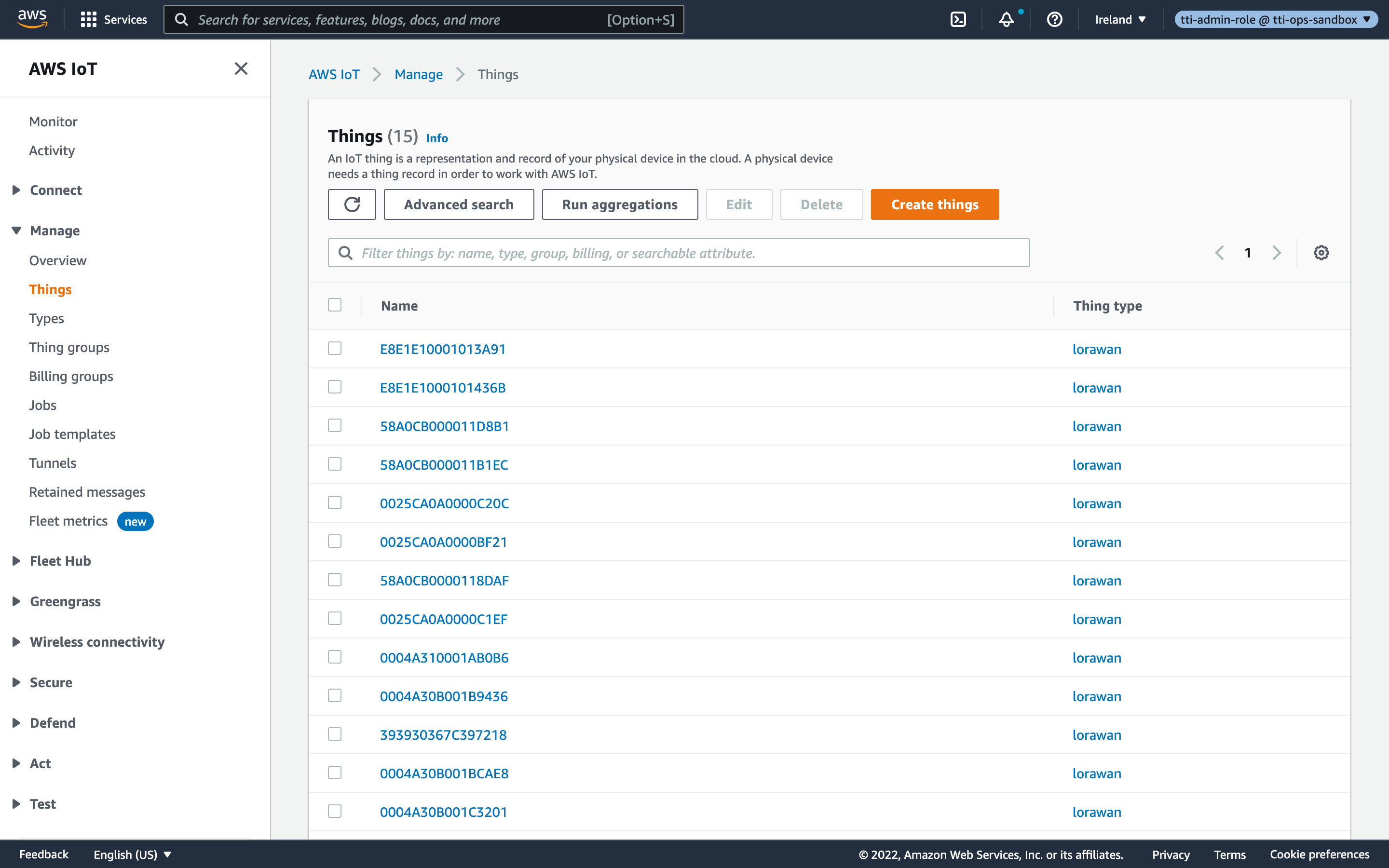
Preparation
In order to create and claim things in AWS IoT, you need to enable event-based messages. This enables the AWS IoT Integration to act on thing create, update and delete events.
In the AWS Console, open Services and go to IoT Core.
In the menu on the left, in the bottom, click Settings.
In the Event-based messages pane, click Manage events.
Make sure that at least Thing: created, updated, deleted is checked.
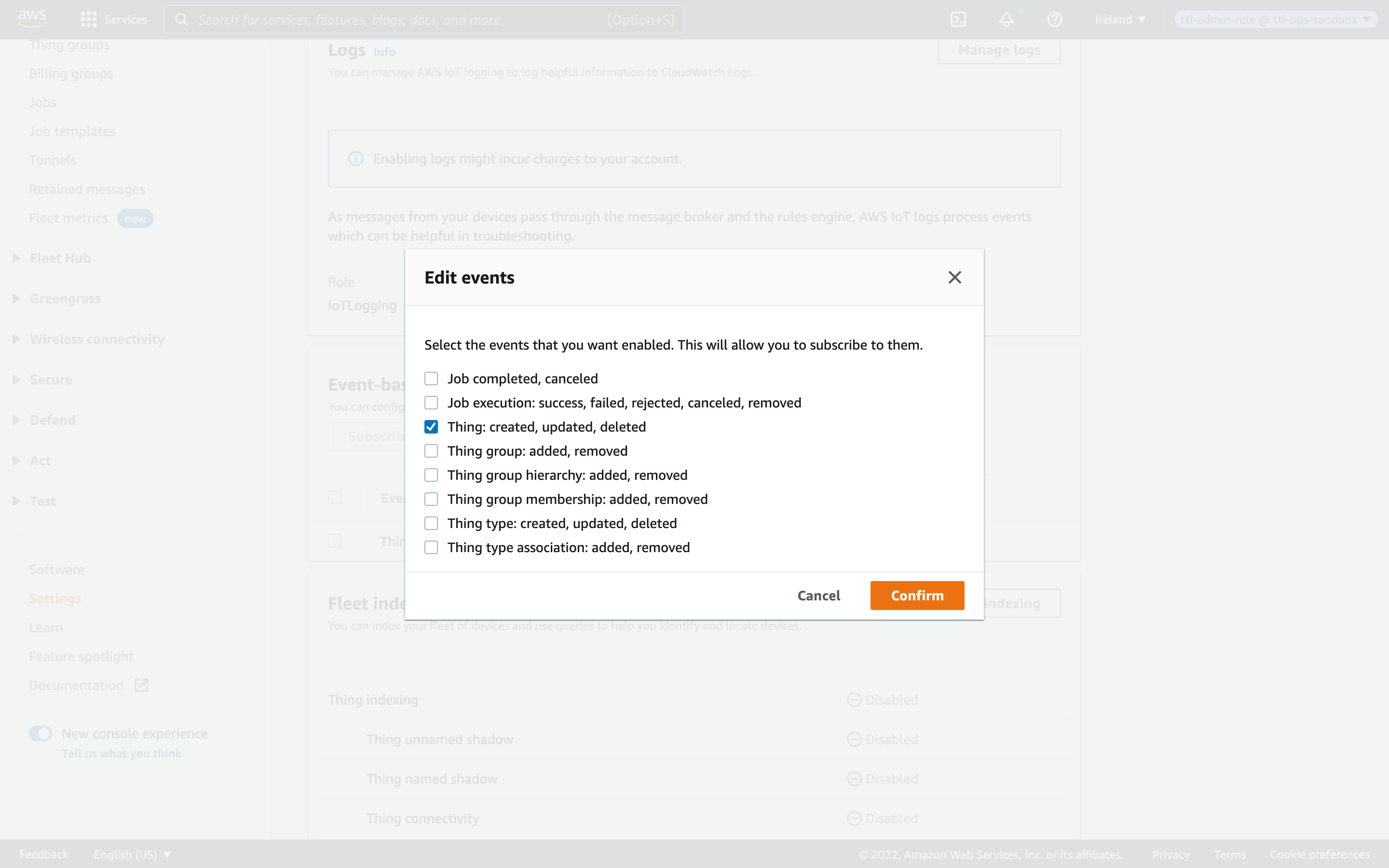
Creating Things
You can use AWS IoT to create devices in The Things Stack. This is useful to manage all your things in one place, without having to use The Things Stack Console, CLI or API.
Creating a Thing allows you to add any LoRaWAN® device by manually entering its information and security keys.
In the AWS Console, open Services and go to IoT Core.
In the menu on the left, click Manage, go to Things and click Create things in the top-right.
Select Create a single thing and click Next.
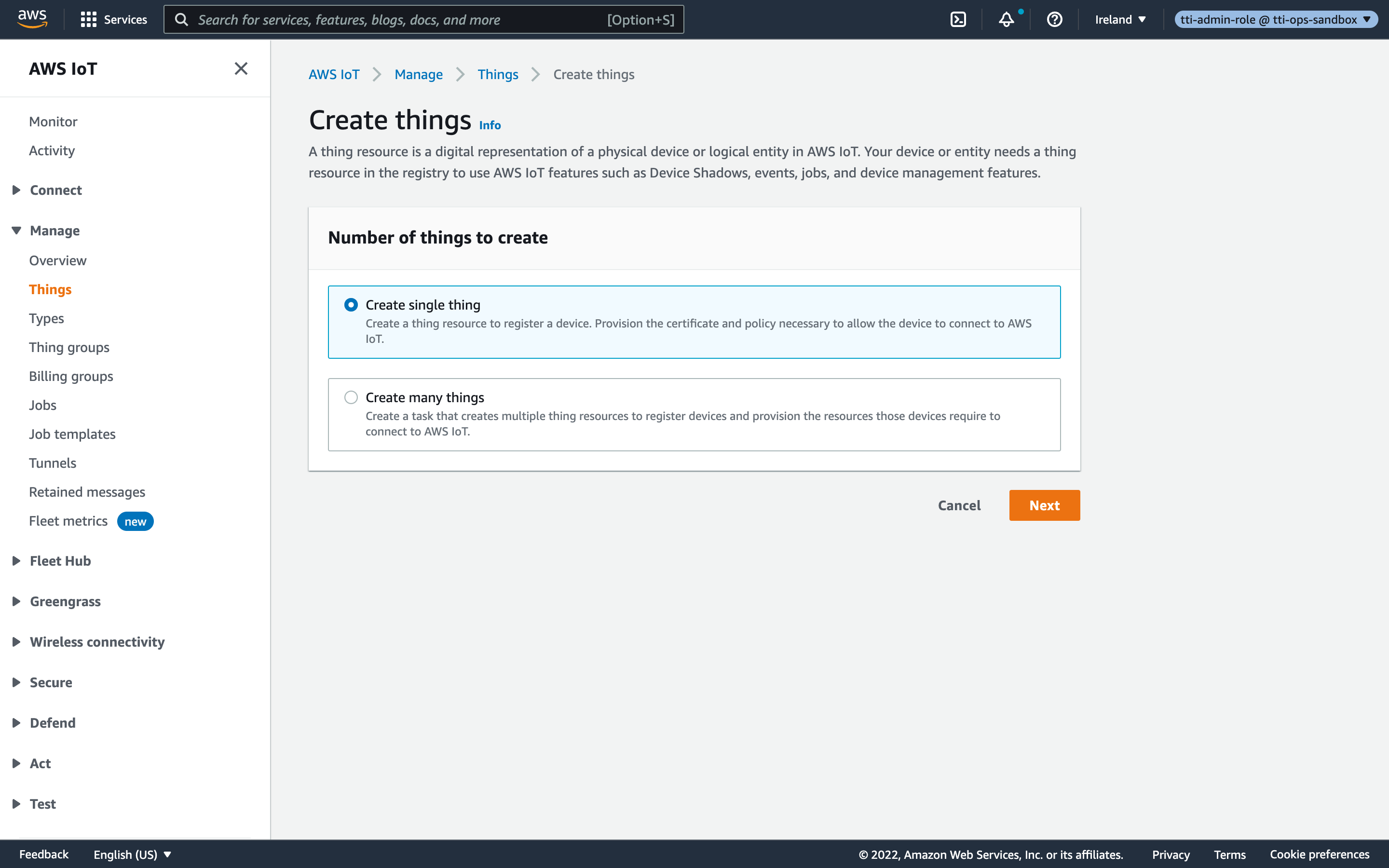
As Name, enter any thing name you like.
Make sure that Thing type is set to the correct thing type, by default lorawan.
There are two Searchable attributes that come with the thing type: devEUI and stackName:
devEUI: the hexadecimal LoRaWAN DevEUI.stackName: the AWS CloudFormation stack name of your deployment. This makes sure that the things are unique and kept apart if you use multiple AWS IoT Integrations side-by-side in your AWS account.
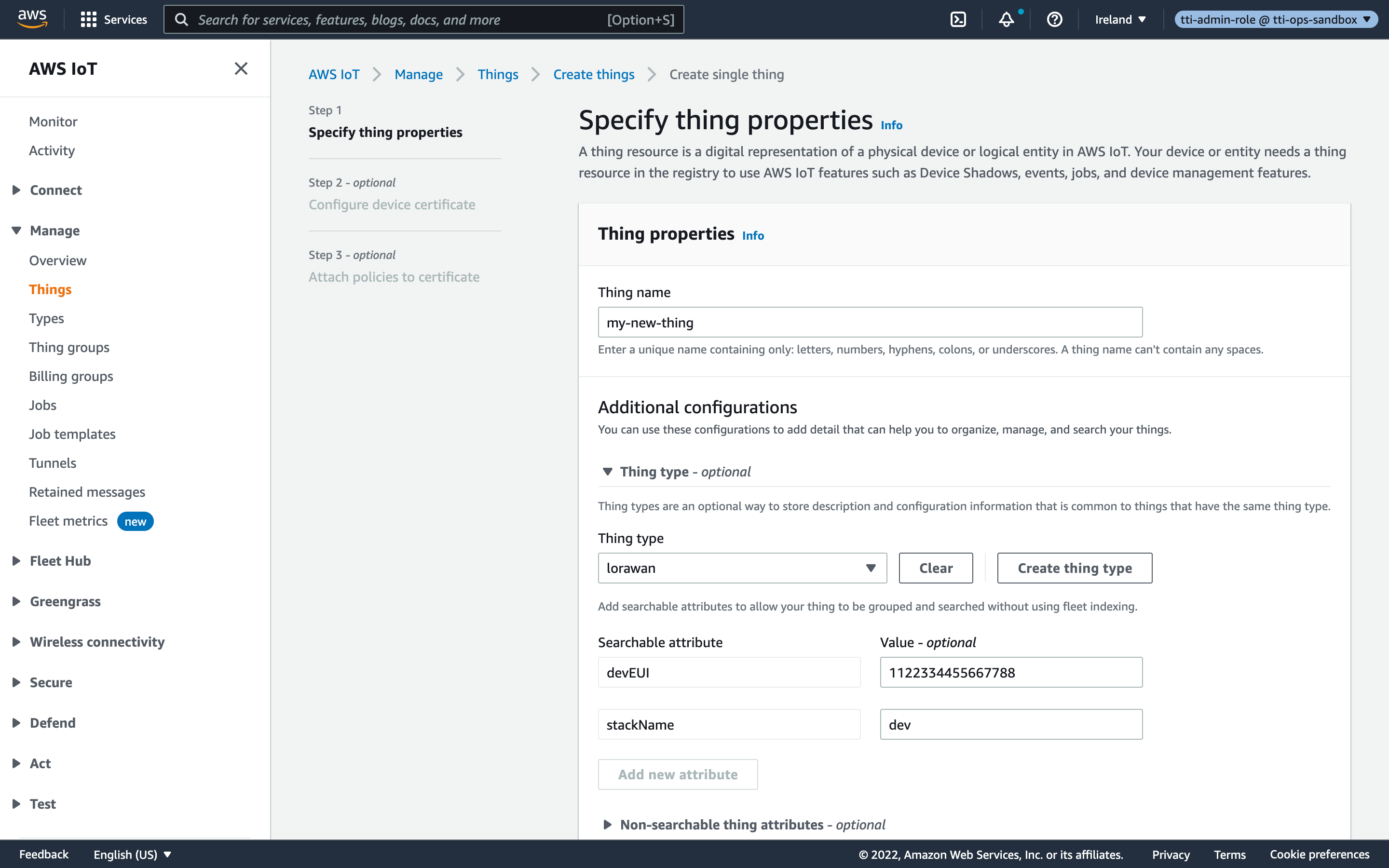
Next, you can create a new device by specifying all required attributes under Non-searchable thing attributes:
joinEUI: the hexadecimal LoRaWAN JoinEUI (or AppEUI). You may also specifyappEUIinstead.lorawanVersion: either1.0,1.0.1,1.0.2,1.0.3or1.1regionalParametersVersion: either1.0,1.0.1,1.0.2(or1.0.2-a),1.0.2-b,1.0.3-a,1.1-aor1.1-bappKey: hexadecimal LoRaWAN AppKeynwkKey: hexadecimal LoRaWAN NwkKey (only when using LoRaWAN 1.1 or higher)- Optional
deviceID: the device ID that will be used to create the device in your The Things Stack application. When omitted, the integration useseui-<dev-eui>as device ID. See ID and EUI constraints for accepted ID formats. - Optional
frequencyPlanID: the frequency plan ID. See Frequency Plans for the supported values. When omitted, the default frequency plan of your AWS region is used. See the Outputs section of your AWS CloudFormation stack to see which one that is.
Note:
Any errors during Creating Things will be propagated to CloudWatch. See Troubleshooting for more information about retrieving logs.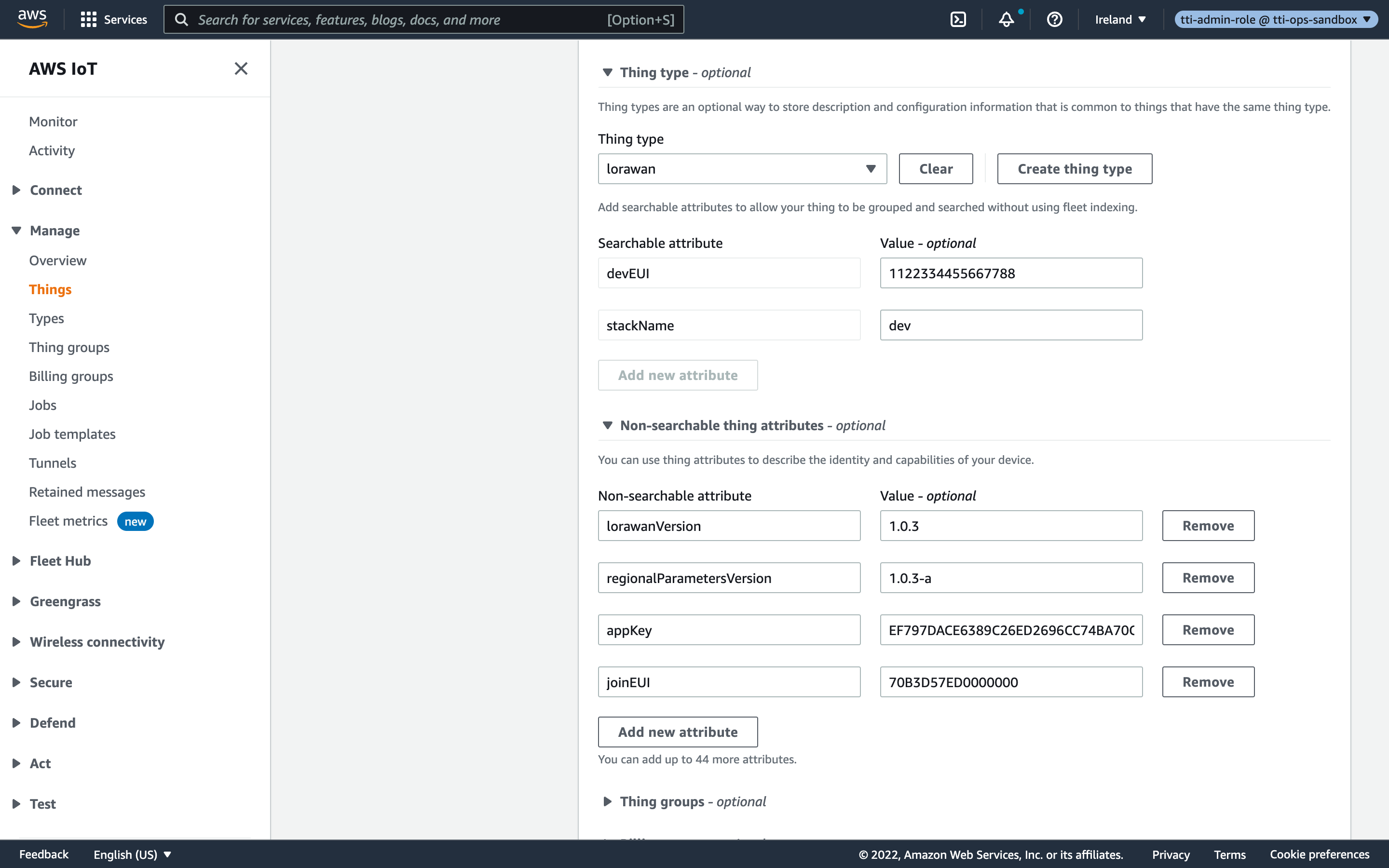
Click Next.
Click Skip certificate and create thing.
Note:
Certificates are used when your AWS IoT thing is capable of TLS client authentication. This is not applicable to LoRaWAN end devices. Therefore, you don’t need to manage certificates for LoRaWAN devices in AWS IoT.Your thing is now created. Please see Troubleshooting if your device is not showing up in your The Things Stack application.